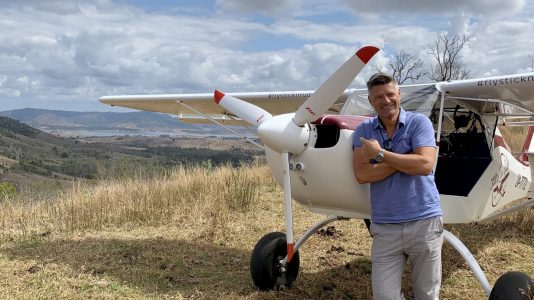TOP 5 REASONS WHY WE CAN TEACH ANYONE TO FLY

Learning to fly an aeroplane is a common bucket list item but is often fraught with a misconception that it’s too hard. At Stick ’n Rudder we have found that it’s possible to teach almost anyone how to fly a plane. A big factor that influences how people learn to fly is what they’ve done in their past… and chances are, you have already done something similar to flying.
In this blog, we share the 5 reasons why we can teach anyone to fly.
1. The odds stack up
We’ve had the ability to teach 100% of people who approach us to learn to fly. So, the odds are in your favour. We’re confident that we can teach anyone to fly, ticking off that bucket list item.
Imagine climbing into a plane and flying above the clouds and exploring the Australian sights in a way you never have. If this is your dream, then don’t waste another minute thinking it’s too hard to learn or you are too old. We can teach anyone to learn to fly.
2. It is similar to driving a car
Flying a plane has a lot of similarities to driving a car. A car works in two of the three dimensions that an aeroplane does, and this motion is controlled by the driver or the pilot in a very similar fashion.
So, if you can drive a car, there’s a good chance that we can teach you to fly an aircraft.
Here are the similarities between driving a car and flying an aeroplane…
The only difference is the third vertical dimension of going up and going down. But there are other places where people have experienced motion in a vertical dimension like in a swimming pool, scuba diving or even an elevator. So, it’s not a completely foreign concept.
3. Risk assessment & decision making
-
The risk assessment and decision-making process of flying a plane is also like driving a car. Whenever you're driving a car, that act of driving the car is subconscious, you don't even know that you're:
- Changing the pressure on the throttle
- Using the brake, or
-
Steering the car.
-
However, you are consciously looking for traffic, predicting their behaviour and assessing if they pose any risk to you. In an aeroplane the same process occurs after we have taught you ‘how to fly’, you won’t consciously be thinking about controlling the plane, you’ll be looking outside, enjoying the view and assessing if other air-traffic will have any effect on you. We will take your previously learnt skills on the road, to the air and you’ll quickly learn that flying an aeroplane is not all new and the concepts are not all foreign.
4. You use your everyday senses to fly a plane
To fly an aeroplane accurately and smoothly you need to get in tune with your sensory inputs that you use in your everyday life. You can actually fly an aeroplane safely and accurately without referencing any of the fancy dials or gauges that the pilot has at their disposal. This is actually one of the most rewarding facets of flying. Flying by the seat of your pants (using your sensory inputs) gives you a true sense of freedom from the bounds of the earth. This is the closest sensation to feeling like a bird.
- You can hear the sound of the wind over the aeroplane getting louder or quieter as the airspeed increases or decreases
- You can feel the control stick getting firmer and the aircraft becoming more responsive as your speed increases
- You can see that you are climbing when we see more sky above the horizon and the ground disappearing in your peripheral vision
These are just some of the sensory inputs that pilots tapped into from their everyday life that can be used in the air to fly around. If you have ever dreamed of soaring around the mountains, looking for waterfalls or cruising by the tops of breaking waves along the beach, you don’t need to dream anymore as you can easily learn how to fly.
5. If you can do these fine hand motor skills, you can learn to fly
-
Any time you make a smooth adjustment with your hand (using your fine motor skills), you are practicing the skills required to manipulate an airplane smoothly. There's a good chance you have used fine motor skills somewhere else in your life that will transfer into learning to fly, these include:
- Using a power tool
- Operating a piece of machinery
- Using a mouse on a computer
- Playing video games
-
Using a flight simulator
-
It's important to note that airplanes are designed to be stable. A lot of people think that if you take your hands off the controls, the airplane will spin out of control. It won't! If there is some turbulence, it might move the aircraft around, but it's always trying to return to its original position.
- So, if you have smooth control inputs, it will assist that built-in stability in the airplane. Therefore, the above previously learned fine motor skills will help you learn to fly.
How long will it take to learn to fly?
In some cases we have been able to teach students how to fly in as little as 20 hours, however as a rule of thumb, a person’s age represents how long it would take them to learn to fly. So, if you’re 50 years old, it will take you around 50 hours of one-on-one training.
If you’re medically fit to fly an aircraft and you have the right attitude toward safety, there isn’t anybody that we haven’t been able to teach.
So, it does take longer to train an older person, but if you fly regularly (this is why our courses are designed in short fully immersive training blocks), there is every chance we can teach you how to fly.
